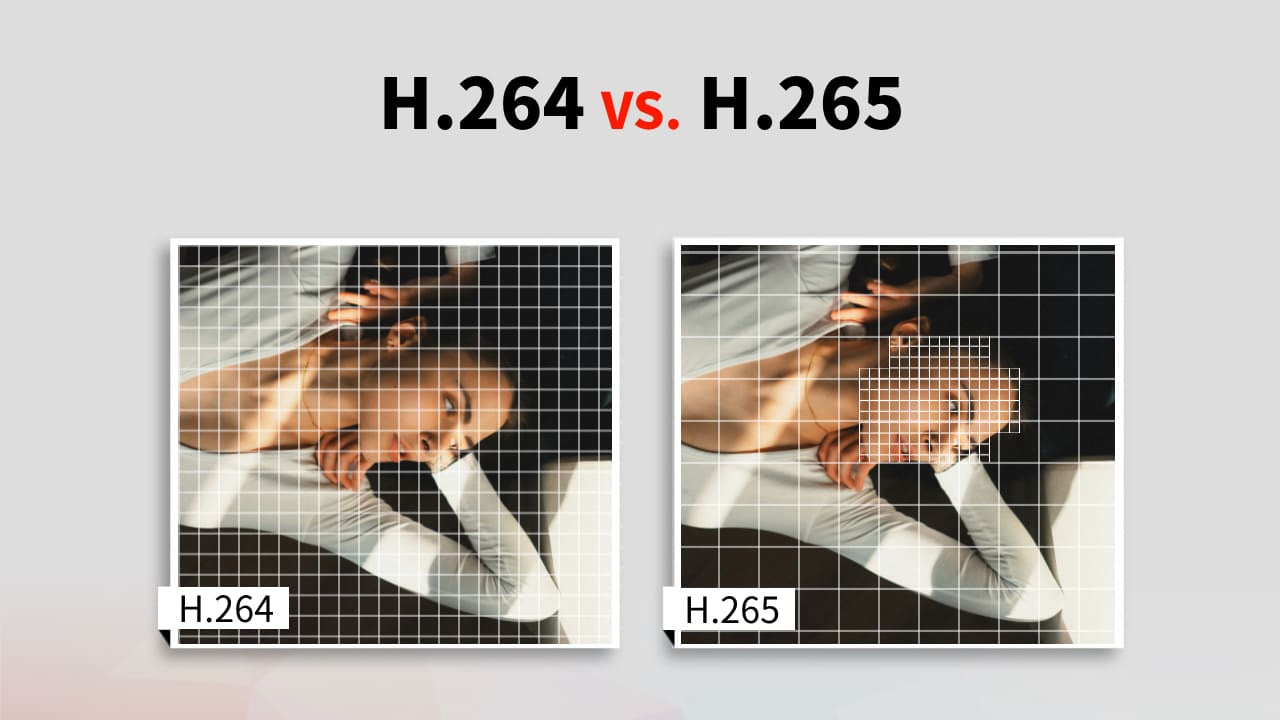Streaming's Future: H.264 vs H.265
In the constantly advancing realm of digital media, the significance of video encoding cannot be overstated. Its impact spans across various sectors, revolutionizing how we create, distribute, and consume media.
An Introduction to Video Encoding
Video encoding is the process of converting raw video content into a digital format that can be efficiently stored and transmitted. It plays a crucial role in reducing file size and bandwidth usage, making digital media more accessible.
Understanding H.264 and H.265 Encoding Standards
H.264 Encoding Standard: Launched as a groundbreaking advance in video compression, H.264 set a new benchmark for the balance between video quality and performance. It was introduced to facilitate high-quality video streaming and broadcasting over the internet by significantly reducing the size of video files without notably degrading image quality. H.264 employs advanced techniques such as motion estimation, intra-frame prediction, and an efficient entropy coding method, making it a versatile choice for various applications ranging from HD broadcasts and Blu-ray to mobile video and video conferencing. Its adaptability across a broad spectrum of bandwidths and devices has cemented H.264’s position as the backbone of modern video encoding.
H.265 Encoding Standard: H.265, also known as High Efficiency Video Coding (HEVC), represents the next step in the evolution of video compression standards. Designed as the successor to H.264, H.265 aims to offer significantly improved compression efficiency, potentially halving the required bandwidth for delivering high-quality video experiences. This leap in efficiency doesn't come at the expense of video quality; instead, H.265 is capable of providing even sharper and more detailed images. Its advancements include support for higher resolutions such as 4K and 8K, improved parallel processing techniques, and enhanced prediction, transform and loop filtering. Although H.265’s adoption has been initially slower due to its increased computational demands and licensing complexities, it is increasingly supported by newer devices and platforms, making it a compelling choice for future-proofing streaming services and content delivery networks.

Detailed Comparison between H.264 and H.265
Compression Efficiency: H.265 outperforms its predecessor by offering superior compression, thereby reducing file sizes significantly without compromising on image quality.
Video Quality: With advanced compression algorithms, H.265 delivers better video quality at the same bitrate, or comparable quality at lower bitrates, compared to H.264.
Bitrate and Bandwidth: H.265's enhanced compression efficiency means lower bitrate requirements for the same quality, translating into reduced bandwidth consumption.
Device and Platform Compatibility: While H.264 enjoys broader compatibility across devices and platforms, H.265 adoption is growing, supported by newer technologies.
Encoding and Decoding Complexity: H.265's advanced features come at the cost of increased encoding and decoding complexity, requiring more powerful hardware.
Streaming and Broadcasting: Both standards are well-suited for streaming and broadcasting, with H.265 being particularly advantageous for 4K and beyond.
Choosing the Right Video Codec: The selection between H.264 and H.265 should be guided by specific needs such as intended use, required video quality, and compatibility considerations.
| Feature | H.264 | H.265 |
| Compression Efficiency | Good | Better, providing superior compression and significantly reducing file sizes without compromising image quality |
| Video Quality | High quality at higher bitrates | Better video quality at the same bitrate, or comparable quality at lower bitrates |
| Bitrate and Bandwidth | Higher bitrate needed for high quality | Lower bitrate requirements for the same quality, resulting in reduced bandwidth consumption |
| Device and Platform Compatibility | Broad compatibility across devices and platforms | Requires newer technologies but is rapidly increasing in adoption |
| Encoding and Decoding Complexity | Less complex, requires less processing power | More complex due to advanced features, requires more powerful hardware |
| Streaming and Broadcasting | Suitable for HD content | More efficient for higher resolutions like 4K |
Tencent MPS: Tailoring Encoding Excellence
Tencent MPS emerges as a leader in the video encoding domain, harnessing the strengths of both H.264 and H.265 codecs. With a focus on low bitrates, high quality, and fast transmission, Tencent MPS helps global clients cut costs while elevating media quality. Their proprietary encoding core notably offers significant bitrate savings without quality compromise, showcasing impressive performance in both H.264 and H.265 encoding.

Conclusion
This comparative analysis of H.264 and H.265 encoding standards underscores the evolutionary strides made in video technology. Amidst this encoding revolution, Tencent MPS stands out by offering solutions that brilliantly optimize video quality and efficiency, assuring an enhanced end-user experience across the board.
FAQs
What makes H.265 preferable over H.264 in streaming?
H.265 delivers the same quality as H.264 but with about half the bitrate, significantly enhancing streaming efficiency, especially for 4K content.
Can H.265 reduce the costs associated with streaming and storage?
Yes, the superior compression rates of H.265 can dramatically minimize storage and bandwidth costs, enabling cost-effective high-quality streaming.
Is it necessary to have newer devices to benefit from H.265?
While older devices may not natively support H.265, the adoption of newer technology is accelerating compatibility, making the transition to H.265 increasingly beneficial.
You are welcome to Contact Us for more information.
